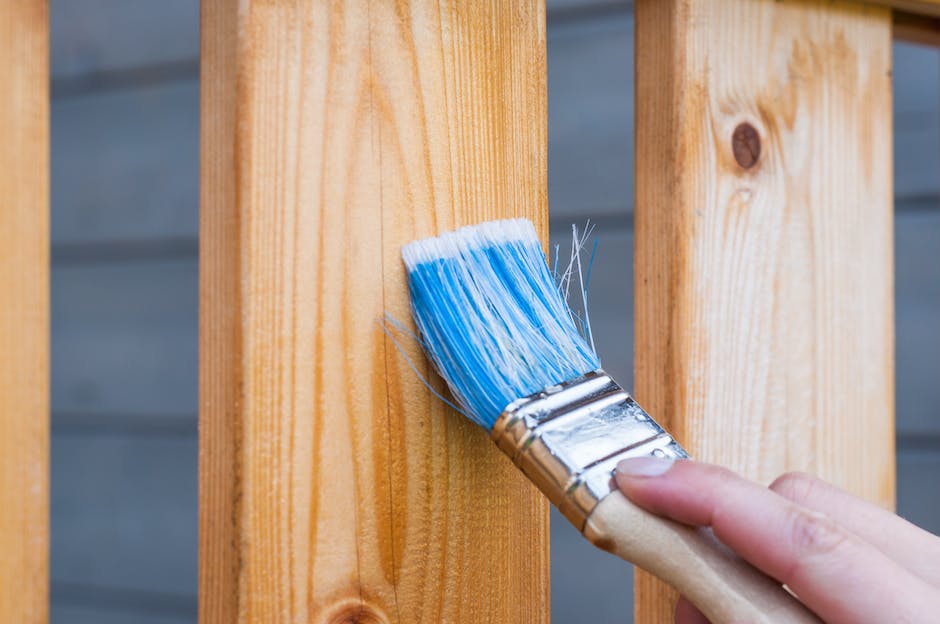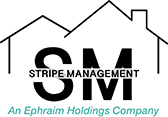Laws related to lead-based paint in Maryland are stringent to safeguard both tenants and property owners from the adverse effects of this toxic element. As a property owner or tenant residing in Maryland, it is crucial to understand these guidelines for lead control in rental properties. Not only does it play a significant role in maintaining robust health, but it also goes a long way in avoiding the penalties that arise from non-compliance. This educational material aims to cover essential elements such as Maryland’s lead laws understanding, lead inspection process, and interpretation of the inspection results. It also guides on how to navigate post-inspection steps including the legal responsibilities of landlords and the best course of action to take based on the inspection results.
Understanding Maryland’s Lead Laws
Overview of Maryland’s Lead Laws for Rental Properties
Maryland’s lead laws are comprehensive regulations aimed at reducing lead poisoning risk in the state’s rental properties. To ensure that a rental property meets these regulations, it requires an official registration, inspection, and certification of lead-free or limited-lead-free status.
Lead-Free versus Limited Lead-Free Status
There are two types of statuses a rental property in Maryland may hold under these lead laws: lead-free or limited lead-free. A lead-free property means that no lead-based paint was found on the structure, both its interior and exterior parts. On the other hand, a limited lead-free property is one where lead-based paint is only absent in the interior but may exist in some exterior areas.
Properties that comply with either of these statuses are considered to be in line with the law and safe for tenant occupancy. These properties must be inspected by accredited lead inspectors and must be re-inspected every two years.
Registration and Inspection of Rental Properties
For landlords, registering a rental property with the Maryland Department of the Environment is mandatory. After registration, the property has to be inspected by an accredited lead inspector or risk assessor. This should be performed before each new tenancy unless the property holds a lead-free or limited lead-free certificate.
Inspections must check every surface, both inside and outside of the property, for lead-based paint. Any lead threat should be dealt with accordingly. Once the property has passed inspection, a certificate of compliance will be issued valid for a specified period.
Penalties for Non-Compliance
Non-compliance with Maryland’s lead laws can lead to serious fines and legal consequences. The Maryland Department of the Environment can impose a penalty of up to $500 per day per violation for noncompliance with lead risk reduction standards or failure to register a property.
Rights and Responsibilities of Tenants and Property Owners
Tenants and landlords both have roles to play in adherence to these lead laws. Tenants are expected to cooperate with landlords during the inspection process. They should notify landlords if any deteriorating paint surfaces are noticed, which could be potential sources of lead dust.
Landlords, on the other hand, should take immediate action upon receiving such reports and must do everything possible to maintain a lead-safe environment.
Property owners have the legal obligation to give tenants an EPA-approved lead information pamphlet and disclose any known information about lead-based paint or lead-based paint hazards before leases take effect. Tenants must provide a lead poisoning prevention notice and certificate showing that the rental property meets Maryland’s lead paint risk reduction standards.
Adhering to Maryland’s Lead Laws
In Maryland, it’s important for property owners to be vigilant about annual rental property registration. This is a fundamental step in staying aligned with the state’s lead laws. Continual renewal of registrations, paired with timely inspections and obtaining fresh certificates of compliance every two years, are critical measures in assuring continuous adherence to these laws. Landlords adopting a proactive approach can greatly reduce the risk of facing penalties. Most importantly, such compliance ensures a healthier and safer living environment for all Maryland tenants.

The Process of Lead Inspection
Getting to Grips with Lead Inspection in Maryland
Lead inspection for rental properties is subject to strict regulations in the United States, especially in Maryland. Particularly, it is necessary for properties constructed prior to 1978 due to the widespread use of lead-based paint during that era. If you are a property owner, getting your property inspected for lead does not merely fulfill a legal requirement but also plays a vital role in safeguarding your tenants’ well-being.
Step One: Hiring a Licensed Inspector
Before you begin, you’ll need to find an accredited lead inspection contractor. The Maryland Department of the Environment provides a list of accredited inspectors in the state, from which you can choose. While hiring a contractor, it’s important to ensure they are licensed by the state and have a good reputation in the field.
Step Two: Types of Inspections
There are three types commonly conducted inspections: dust wipe, visual, and full risk assessment. Dust wipe tests are done to check for lead dust on surfaces, while visual tests identify any deteriorating paint. The full risk assessment is the most comprehensive — it not only looks for lead-based paint but also conducts soil testing and a full review of the property to identify any potential hazards.
Step Three: The Inspection Process
During the inspection, the contractor will use specialized tools and instruments, like an X-ray fluorescence analyzer, to detect lead in painted surfaces without damaging them. They will also conduct dust wipe tests using specialized cloths which they later send to a lab for analysis. These inspections are typically thorough, checking both interior and exterior surfaces, including all painted surfaces, such as walls, doors, window sills, and frames.
Step Four: Understanding the Inspection Report
Following the inspection, the contractor will provide a detailed report. This report should outline all areas that were tested, including the exact lead levels detected. If any part of the property fails to meet the Maryland lead-safe standards, immediate remediation is required.
Step Five: Remedying Lead Hazards
In the case of a failed inspection, your contractor can advise on the best remediation techniques. This could include paint stabilization, component replacement, or encapsulation. It’s crucial to carry out remediation works swiftly to reduce the risk of lead exposure to tenants.
Step Six: Follow-up Inspection
Once remediation works are finished, a clearance examination is needed. This follow-up inspection verifies that all hazards have been appropriately addressed, and no lead dust remains.
Maintaining Lead Compliance
After passing the final inspection and obtaining the Lead-Safe or Limited Lead-Free Certificate, the property is ready to be rented, but upkeep and maintenance are essential moving forward. If the property undergoes renovations or repairs that disturbs painted surfaces, new inspections may be necessary to ensure continued compliance.
In the state of Maryland, lead inspection holds significant legal validity for rental properties. It is not just about observing a mandate, but also about ensuring the well-being and safety of the tenants. Every owner of a rental property must take these responsibilities seriously to avoid any possible legal consequences or penalties.

Interpreting Results of Lead Inspection
Deciphering Lead Inspection Reports
In Maryland, owners leasing out properties built before 1978 must familiarize themselves with interpreting lead inspections. The comprehension of these results is not only necessary for tenant safety, but also for compliance with Maryland state laws. The inspection will yield critical information, labeling the property as either a ‘pass’ or ‘fail’ based on the results.
‘Pass’ or ‘Fail’ Categories
Understanding what constitutes a ‘pass’ or ‘fail’ is crucial. A property will pass a lead inspection if the quantity of lead falls below the allowable standard set by the Maryland Department of the Environment. This standard is usually 0.5% lead by weight or 1.0 milligram of lead per square centimeter of surface area. If lead levels are under these thresholds, landlords can legally rent the property.
In contrast, a ‘fail’ result signifies lead levels exceeding the permissible standard. Properties that fail the inspection pose potential health hazards to tenants, especially young children. Under Maryland law, landlords must not rent these properties until necessary remediation measures have been undertaken and the property passes a follow-up lead inspection.
Health Risks of Lead Exposure
It’s paramount to recognize the potential health risks associated with lead exposure. Most vulnerable to lead poisoning are children six years old and younger. Swallowing or breathing in lead dust can lead to neurological damage, slowed growth, developmental delays, and learning difficulties. In adults, lead exposure can result in higher blood pressure, hypertension, and kidney issues.
Interpreting the Data Received
Interpreting data received after a lead inspection tends to be straightforward. The report will typically provide details on the levels of lead found on the property, broken down by specific areas such as walls, doors, ceilings, etc. It’s vital to focus on areas that fail the inspection as these will require immediate attention and remediation.
In some cases, the report may also include suggestions for remediation. This can include replacing painted surfaces, covering them with a lead-encapsulating paint, or professionally removing the lead.
Importance of Understanding the Report
It is not only essential to understand the report for the health and safety of the tenants, but Maryland law also states that landlords must provide all tenants with the Environmental Protection Agency’s “Protect Your Family from Lead in Your Home” brochure and copies of all available lead inspection certificates, helping tenants to understand potential risks in the rental property.
Responsibilities of Rental Property Owners in Maryland
Rental property owners in Maryland are tasked with the critical obligation of regularly conducting lead inspections. This is a necessary step to confirm the safety of their properties and to abide by the lead laws stipulated by the state. Gaining a fundamental understanding of the criteria that determine a ‘pass’ or ‘fail’ outcome, along with learning to effectively interpret the obtained data, sets the foundation for the successful upkeep of a safe rental property.

Next Steps after Inspection
Deciphering the Outcome of an Inspection
Post-inspection, the primary step revolves around accurately understanding the results. Considering a rental property in Maryland, one would generally encounter one of two possible results following a lead inspection: a pass or a fail.
A pass essentially denotes that the property’s lead levels measure below the acceptable limit as demarcated by state legislation. However, if a property were to fail the inspection, this would suggest that the lead levels are excessively high and could potentially jeopardize the health of the tenants. In instances of failure, Maryland laws outline explicit actions that must ensue.
Lead Remediation Methods
If a property fails inspection, it is vital for the issue to be addressed promptly due to the health risks associated with lead exposure. There are several methods of remediation for properties with high lead levels. These include:
- Lead abatement: This involves completely removing the lead-based paint or permanently covering it.
- Painting/Encapsulation: Applying paint or a coating that encapsulates the lead-based paint can prevent exposure.
- Replacement: This entails replacing lead-painted doors, windows, and trim with new, lead-free materials.
These remediation steps require professionals certified to deal with lead abatement.
Communicating with Tenants
Upon the completion of a lead inspection, the property owner must promptly and openly communicate the results to tenants. In instances where high lead levels are detected, it is essential to be transparent about the potential risks and the measures that will be taken to fix the issue.
In accordance with the Safe at Home program in Maryland, owners or agents must provide tenants with the EPA-approved lead hazard information pamphlet, entitled “Protect Your Family from Lead in Your Home” before tenants are obligated under a new sale or lease contract.
Maintaining Legal Compliance
If the property failed an inspection, property owners are required by Maryland’s Lead Risk Reduction in Housing law to have it treated by an accredited lead paint contractor. Subsequently, the rental unit must undergo a passing lead dust test before it can be rented again.
In addition, it’s crucial that landlords comply with Maryland’s Full Risk Reduction standard, which necessitates a specific series of steps to reduce the risk of lead exposure.
Last but not least, landlords must register their properties annually with the Maryland Department of the Environment (MDE). Accompanying this registration should be a certificate confirming that the property meets Maryland’s lead safety standards.
Consequently, landlords should always stay updated with the current regulations in Maryland regarding lead safety to ensure that their properties remain compliant and safe for their tenants.

Addressing the issue of lead contamination in rental properties is critical to maintaining the health and wellbeing of the Maryland community. Knowledge of the lead laws, understanding the inspection process and interpreting lead inspection results are elements that contribute to the sound decision-making in owning, renting, and managing properties. It is of vital importance for owners and renters to take proactive steps to ensure their properties meet necessary safety requisites, and if not, to remediate any hazardous lead levels detected. Equally important is the clear communication and understanding of legal requirements to avoid penalties and potential lawsuits. Therefore, maintaining the lead-safe status of a rental property should be among the top priorities not only for landlords but also for all residents of Maryland.
